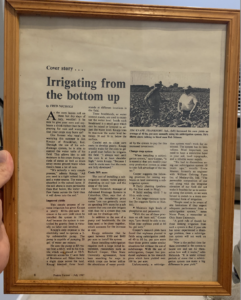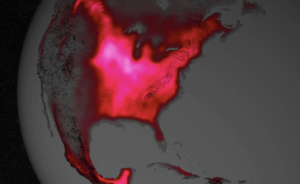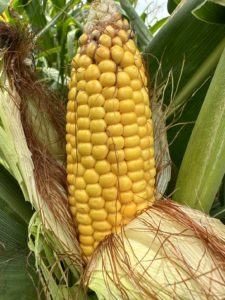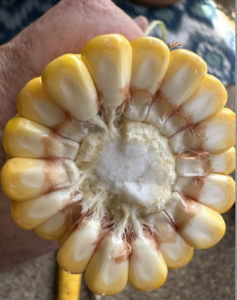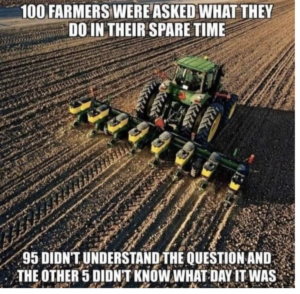36 years ago, a wide-eyed intern walked into the office of Indiana Prairie Farmer magazine. It was a baptism by fire. Paul Queck, the seasoned editor, told him, “We’d like to have you take a shot at writing what we hope to be the cover story for July. Since you’re only here for a few months, we don’t have time to train you, so we need to see what you got. Either you’ll produce a great story we can run, or we won’t use it and you can spend the rest of the summer editing news releases.” Sounds harsh, huh? Then he continued, “Oh, and this is the last story idea we’ll ever give you. From this point forward, you need to come up with your own story ideas and find sources.” Well, that intern must have come through, evidenced by the story below. Dozens of other stories penned by that intern appeared throughout that year, too. All written on a typewriter, no less.
Where’s the most biologically active place on earth? The Amazon rainforest, you say? Try the midwestern United States. At this time of year, at least. Rapidly growing corn and soybean fields across the Corn Belt serve as a giant oxygen-producing, carbon-inhaling machine. Under the summer sun, and aided by crop nutrients and irrigation, there’s an amazing amount of photosynthesis going on, especially across the I states. Satellite images reveal the Corn Belt is currently glowing with fluorescence levels 40% greater than those of Amazon rainforest!
There is an undesired by-product of all this vegetative productivity. From the perspective of country dwellers, that is. Those midwestern fields also produce a lot of unbearable humidity. Water absorbed by corn roots is moved throughout the plant. Much like us humans, corn has a natural cooling mechanism where it releases moisture from its leaves. A single acre of corn can release up to 4,000 gallons of water each day! People in areas with high concentrations of corn can actually feel the heat and humidity as those local heat indexes will rise due to the humidity produced by cornfields.
Another week, another massive private investment in #regenerativeagriculture. PepsiCo and Walmart announced a $120 million collaboration to pursue soil health and water improvements. North America’s largest convenient foods and beverage maker is collaborating with the world’s largest retailer to accelerate the adoption of #regenag practices on 2 million acres while removing 4 million metric tons of GHG emissions by 2030.
On Wednesday & Thursday of this week, Huma is sponsoring Soil Regen’s “Beyond the Yield” event in Kearney, Nebraska. The event will usher growers through the entire regen ag journey, from soil testing, to implementation, to marketing. Michael and I will be attending.
Yesterday, I rode in the sprayer rig as we applied what should be the final treatment to my corn. This provided me with a great overhead perspective of the crop. Overall, we’re producing lots of monster ears. Keep in mind I had a stand count of 40,000 plants per acre. To see ears this size at such a high population is impressive. Many of the ears have 18 rows (rounds). The tips are not completely filled out, but I’m still counting a row length of 38 kernels long on most ears. Most impressive is the kernel size and weight. The kernels are very plump. The ears feel like bricks. I’m seeing some denting occur, which means the plants are starting to enter the R5 stage, which is the final growth stage of corn (corn reaches physiological maturity at R6). Many farmers give up at this point. But in reality, the kernels have accumulated less than half of their dry matter accumulation. So, today’s foliar feeding of Huma Lucky 7, Max Pak, Calcium and X-Tend should help with grain fill. The plants are healthy, evidenced by the fact we could drive a spray rig across the field and the plants brushed back immediately with no damage. That said, we still applied Huma Crop Gard and Proud 3 to carry us home. Yes, there is green snap throughout the field, but it may be less than 10% overall and there are some patches where I saw little to no damage. The corn on the south end of the field, which had the least amount of damage, had been behind the corn on the north side. But it has caught up and as you can see by the photo below, the ears are massive. I am optimistic that we’ll have sections of the field produce very high yields.
Okay, maybe it’s not an official poll. But very representative:
Related Posts
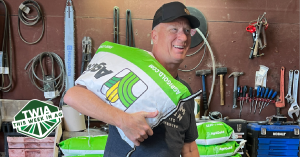
This Week in Ag #61
“Free seed can cost a lot of money.” That was dad’s less-than-tactful response to a seed salesman hoping to woo him with a special offer. Was dad exaggerating (as he was notoriously known to do)? Not in this case. Even using today’s financial standards – where seed costs have more than quadrupled in the 30 years

Video: Earth Day, 2022
On April 22, let's celebrate by doing something good for Planet Earth. There are enormous environmental challenges ahead, but also great opportunities.
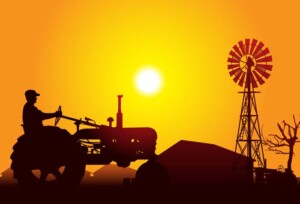
This Week in Ag #2
Are we looking at a fertilizer shortage? Guess it depends on your definition. The availability of fertilizer isn’t a major concern in the US. It really wasn’t last year, either. As a good friend (who I consider to be among the best farmers in the country) told me last winter, “you can get it, it’s

